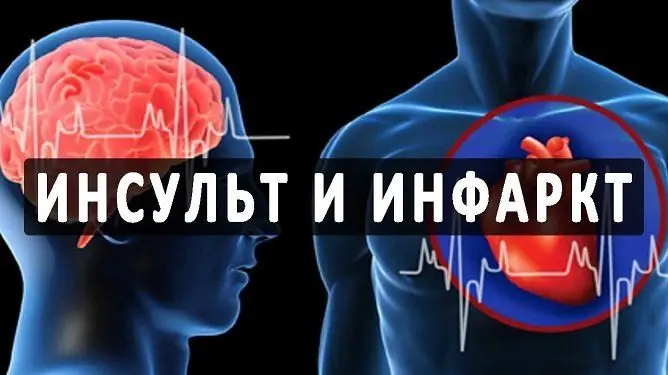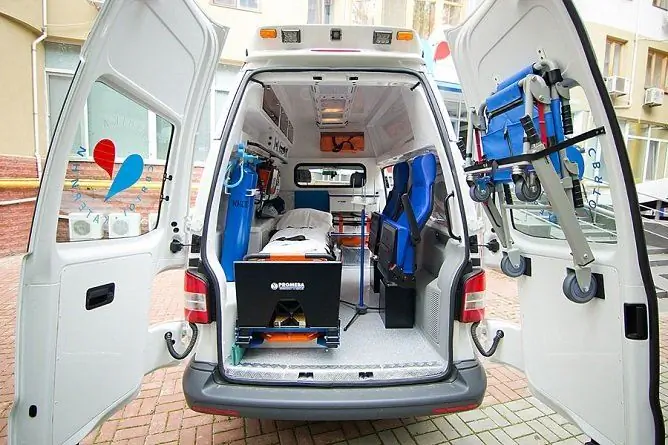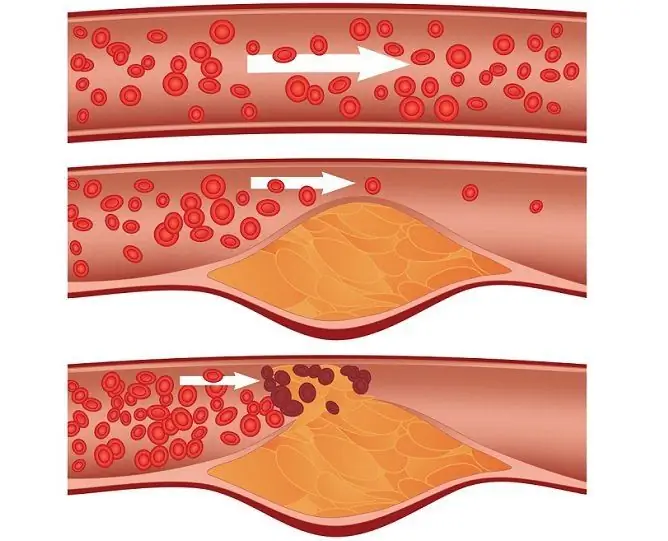- Author Rachel Wainwright [email protected].
- Public 2023-12-15 07:39.
- Last modified 2025-11-02 20:14.
Difference between stroke and heart attack: what is the difference and what is common
The content of the article:
- Which is more dangerous, a stroke or heart attack
- What is a stroke
- What is a heart attack?
- Treatment Approach: What's the Difference Between Stroke and Heart Attack
- Video
What is the difference between stroke and myocardial infarction, and what do these diseases have in common?
Stroke is an acute disturbance of the blood circulation in the brain, as a result of which a section of brain tissue is deprived of food and dies. Speaking of a heart attack, most often they mean damage to the heart, its muscle component - the myocardium. However, this term can also be applied to the kidneys, intestines, lungs, and also to the brain - cerebral infarction is sometimes called ischemic stroke due to softening of the brain tissue at the site of the lesion. In both cases, due to insufficient blood circulation, acute ischemia develops, and cells die.

Despite all the differences, stroke and heart attack have a lot in common
Which is more dangerous, a stroke or heart attack
The main difference between stroke and myocardial infarction, if you do not take into account the localization of pathology, is the nature of the developing acute vascular disorders. In stroke, they are associated with subsequent neurological deficits, and in heart attacks, with heart failure.
The primary differential diagnosis between two acute diseases is carried out according to the primary symptomatology - a patient with a heart attack will show the heart and hold on to it, since the pain during the attack is extremely intense. A stroke is usually also characterized by a sharp intense pain, but not a heart, but a headache.
Stroke has a large list of long-term complications that lower the quality of life, and often lead to the patient's disability. Often it is necessary to spend a lot of time and effort on treatment and recovery, trying to ensure that the brain structures return their lost functions, and in this regard, a stroke is worse than a heart attack.
Both a stroke and a heart attack have a high mortality rate in the first hours after an attack, but we can say that a heart attack is worse - often with an extensive transmural heart attack, medical workers do not even have time to catch the patient alive. With a stroke, there is usually little time left (2-3 hours).
Changes in the shock organ, that is, in the brain during a stroke, can be either irreversible (usually in the case when medical assistance did not arrive in time) or reversible. Deep necrotic changes in the tissues of the heart muscle are irreversible - the affected part of the muscle is lost forever, and a scar of connective tissue will remain at the site of the infarction.
If a patient has experienced a heart attack, in most cases he will be able to return to normal life much faster than a patient with a stroke, which takes a long time to recover.
Another difference between a stroke and a heart attack is that the heart attack is more likely to recur. After a heart attack, heart failure develops for the rest of his life, and the larger the affected area, the higher the stage of failure.
In short, a heart attack is more dangerous than instant death, and a stroke in that the probability of disability is higher.
What is a stroke
Stroke is ischemic and hemorrhagic. Stroke occurs due to oxygen starvation of the brain cells, which are very demanding to have enough oxygen. In his absence, cells die, and neural connections open.
In the first case, it is caused by blockage of the vessel by a cholesterol plaque, thrombus or embolus, in the second - with a cerebral hemorrhage. The released blood pushes back, squeezes the brain structures, leads to a violation of their function, and the ischemic tissue dies.
The main causes of stroke:
- hypertension - a constant increase in pressure has a detrimental effect on the vascular wall, promotes its degeneration, which accelerates the wear and tear of the vessel and increases the risk of rupture;
- atherosclerosis - leakage of the walls of blood vessels with fat-protein detritus deprives the vessels of elasticity. Later, platelets and fibrin join the inflammatory process, an atherosclerotic plaque is formed, which blocks the blood flow;
- thrombosis - when a blood clot breaks off, it enters free circulation, after which it is able to enter the cerebral vessel and clog it;
- congenital pathology of cerebral vessels.
These reasons, coupled with the influence of risk factors such as smoking, physical inactivity, diabetes mellitus and others, lead to stroke. Its signs are:
- numbness, paralysis of the face on one side;
- numbness of the limbs, muscle weakness on the side opposite to the lesion;
- speech disorders;
- disorientation in space;
- impairment of cognitive functions;
- disturbances of consciousness of varying severity.
First aid consists in immediately calling the ambulance team, transferring the patient to a supine position with the head turned to one side to avoid aspiration of vomit. The patient should not be left alone until the ambulance arrives.
What is a heart attack?
A heart attack affects the heart muscle. A constantly operating structure requires a massive influx of energy and oxygen. If the blood supply is disrupted for one reason or another, the internal oxygen reserves of the muscle tissue dry up, and the cells die - ischemic myocardial necrosis is observed due to its infarction.

Both with a stroke and a heart attack, you must immediately call an ambulance for the patient.
The causes of a heart attack are similar to those of a stroke - they are atherosclerotic changes, thromboembolism of the coronary arteries, but also heart failure, inflammation of the pericardium.
Signs of a heart attack include:
- specific acute chest pain that radiates to the left arm, scapula, jaw, abdomen, sometimes to the groin. Painful sensations are poorly relieved by analgesics, but taking drugs that improve cardiac circulation (such as Nitroglycerin, Validol and others) relieves symptoms and helps to wait for an ambulance to arrive;
- arrhythmia, a feeling of palpitations or cardiac arrest - before a heart attack, the patient may complain that he clearly feels every heart beat, or that his heart seems to freeze. This indicates a violation of the conducting system of the heart;
- sweating, anxiety, fear of death.
First aid for a heart attack is to calm the person down, give him Nitroglycerin, after calling an ambulance. While waiting for her, it is necessary to provide oxygen access, put the patient to bed and stay with him until the team arrives.
Treatment Approach: What's the Difference Between Stroke and Heart Attack
Stroke treatment is aimed at normalizing cerebral circulation, preventing further complications, improving blood perfusion in the affected area and restoring impaired functions. For this, drugs of the nootropic group are prescribed (to improve memory, cognitive abilities), fibrinolytics (dissolve blood clots and blood clots), anticoagulants (prevent excessive blood coagulation).
An additional group of drugs includes blood pressure control agents, sedatives, angioprotexors and antioxidants.
How is heart attack treatment different? First, it should start with the simplest heart medications immediately after an attack; this may affect survival. In a hospital setting, the goal is to return nutrition to the ischemic area as soon as possible. For this, drugs are prescribed that improve coronary blood flow, dilate blood vessels, increase the endurance of the heart muscle in conditions of ischemia, and increase the absorption of oxygen by the heart cells.

The best prevention of both heart attack and stroke is a healthy lifestyle.
The supportive group consists of the same drugs as for stroke.
There are practically no differences between stroke and heart attack in terms of prevention: walks in the fresh air, normalization of body weight, proper nutrition, regular but moderate physical activity, strict control of blood pressure, taking drugs of an auxiliary group for prevention are shown.
Video
We offer for viewing a video on the topic of the article.

Nikita Gaidukov About the author
Education: 4th year student of the Faculty of Medicine No. 1, specializing in General Medicine, Vinnitsa National Medical University. N. I. Pirogov.
Work experience: Nurse of the cardiology department of the Tyachiv Regional Hospital No. 1, geneticist / molecular biologist in the Polymerase Chain Reaction Laboratory at VNMU named after N. I. Pirogov.
Found a mistake in the text? Select it and press Ctrl + Enter.






